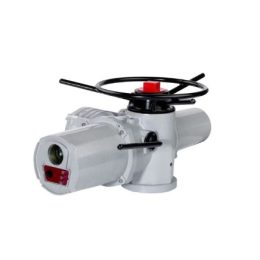Valve Maintenance During Operation
Proper maintenance during valve operation is important for keeping the valve clean, well-lubricated, and in good working order year-round. Routine maintenance includes cleaning the valve, lubricating its parts, and ensuring all valve components are intact and functional.
Cleaning the Valve
Dirt, oil, and medium residues build up on the valve’s surface, trapezoidal thread, valve stem nut, sliding parts, bracket, gears, and other areas, leading to wear and corrosion. To prevent this, it’s crucial to keep the valve clean and protect its paint. Brushing and compressed air blowing are suitable for removing dust, while wiping with a rag works for the trapezoidal thread and teeth. Steam blowing or brushing with copper wire is suitable for removing oil and medium residues, ensuring the processing surface and matting surface show a metallic luster, and the painted surface shows the natural color of the paint. The trap should be inspected at least once per shift by a dedicated person. The flush valve and plug at the bottom of the trap should be opened regularly for flushing or disassembled and flushed to prevent dirt from blocking the valve.
Lubricating the Valve
Valve parts, including the trapezoidal thread, valve stem nut, sliding parts, bearing parts, gear, worm gear, worm meshing parts, and other coordinated movable parts, need good lubrication conditions to reduce friction and mutual wear. If oil cups or nozzles are damaged or lost during operation, they should be repaired, and the oil circuit should be dredged. Lubrication parts should be regularly refueled based on specific conditions. High-temperature valves are not suitable for oil and butter, which will melt due to high temperature, and are better suited for injecting molybdenum disulfide and wiping graphite powder. Lubricants, such as organic oil, butter, molybdenum disulfide, and graphite, are used for different parts. For exposed parts that need lubrication, molybdenum disulfide and graphite powder are better than butter as they do not contaminate dust and provide better lubrication. Graphite powder is not easy to apply directly, but it can be used in paste form with a little oil or water. The oil-filled plug valve should be filled with oil at the specified time.
Maintenance of the Valve
All valve components should be intact and functional during operation. The bolts on the flange and bracket are indispensable, with intact threads and no looseness allowed. If the tightening nut on the handwheel is loose, it should be tightened to avoid wearing the connection or losing the handwheel and nameplate. The packing gland should not be skewed or have no pre-tightening gap. Valves located in areas where they are easily contaminated by rain, snow, dust, sand, or other dirt should have protective covers on their valve stem. The valve ruler should be complete, accurate, and clear. The lead seals, caps, and pneumatic accessories of the valve should be complete and intact, and there should be no dents or cracks in the insulation jacket. It is not allowed to knock, stand, or support heavy objects on the valve during operation, especially non-metal and cast iron valves.
Proper valve maintenance during operation can help ensure the valve is running smoothly and prevent damage from wear and tear.
- Gate Valves: Bidirectional and Versatile for Various Applications
- Precautions for Butterfly Valve Installation
- How to distinguish the structure of the ball valve
- “Understanding Ball Valves: Exploring the Parts of a High-Performance Control Solution”
- Working Principle of Stop Back Valve
- What Is PTFE Ball Valve?



